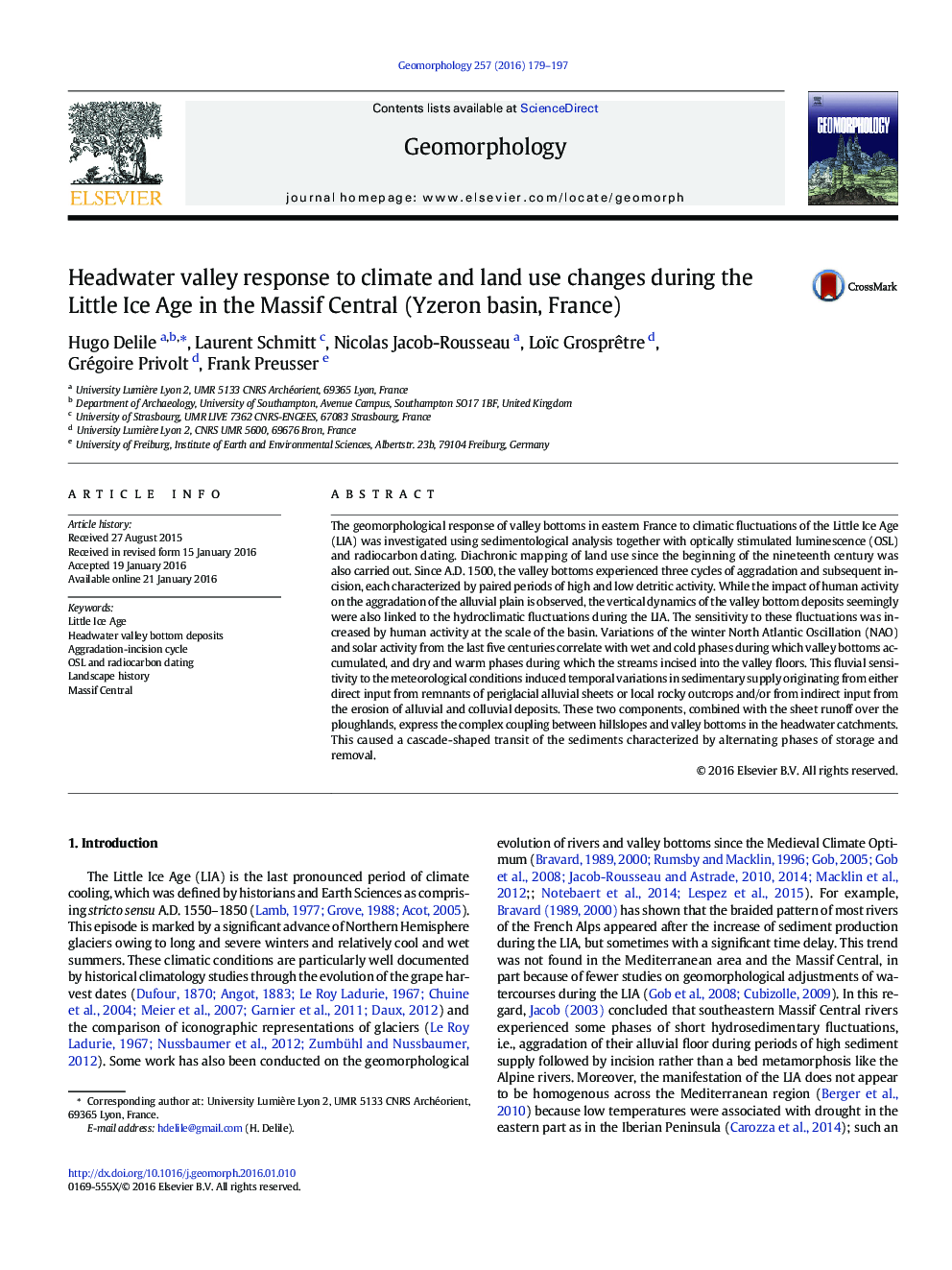| کد مقاله | کد نشریه | سال انتشار | مقاله انگلیسی | نسخه تمام متن |
|---|---|---|---|---|
| 6431649 | 1635392 | 2016 | 19 صفحه PDF | دانلود رایگان |
- OSL and radiocarbon dating reveal complex sedimentary history during Little Ice Age.
- Headwater valley bottoms experienced three aggradation/incision cycles.
- Vertical dynamics of deposits were sensitive to climate and human land use.
- Complex slope-channel coupling resulted in cascade shape transit of sediments.
The geomorphological response of valley bottoms in eastern France to climatic fluctuations of the Little Ice Age (LIA) was investigated using sedimentological analysis together with optically stimulated luminescence (OSL) and radiocarbon dating. Diachronic mapping of land use since the beginning of the nineteenth century was also carried out. Since A.D. 1500, the valley bottoms experienced three cycles of aggradation and subsequent incision, each characterized by paired periods of high and low detritic activity. While the impact of human activity on the aggradation of the alluvial plain is observed, the vertical dynamics of the valley bottom deposits seemingly were also linked to the hydroclimatic fluctuations during the LIA. The sensitivity to these fluctuations was increased by human activity at the scale of the basin. Variations of the winter North Atlantic Oscillation (NAO) and solar activity from the last five centuries correlate with wet and cold phases during which valley bottoms accumulated, and dry and warm phases during which the streams incised into the valley floors. This fluvial sensitivity to the meteorological conditions induced temporal variations in sedimentary supply originating from either direct input from remnants of periglacial alluvial sheets or local rocky outcrops and/or from indirect input from the erosion of alluvial and colluvial deposits. These two components, combined with the sheet runoff over the ploughlands, express the complex coupling between hillslopes and valley bottoms in the headwater catchments. This caused a cascade-shaped transit of the sediments characterized by alternating phases of storage and removal.
Journal: Geomorphology - Volume 257, 15 March 2016, Pages 179-197
